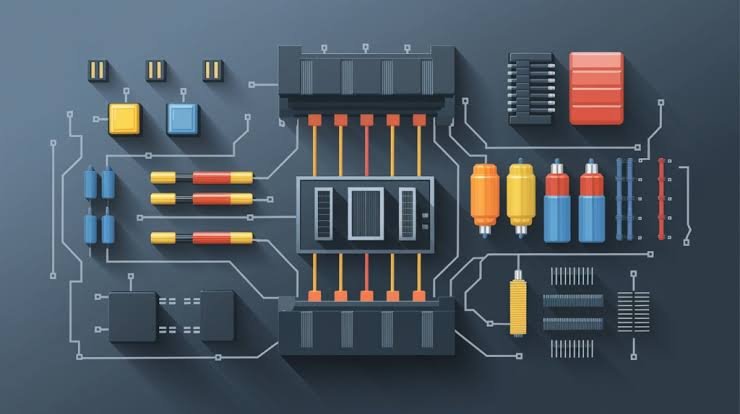
When you hear about the Mollar CGT20750 schematic drawing, it might sound technical or complicated. But understanding the basics of this drawing can help you grasp how this popular Mollar tool works. In this post, we will break down everything you need to know about the Mollar CGT20750 schematic in simple, clear language. Whether you’re a DIY enthusiast or just curious about tool diagrams, this guide will make it easy for you to follow along.
Introduction to the Mollar CGT20750 Schematic Drawing
Schematic drawings are like the blueprints of machines and devices. They show you the inner workings and connections of various parts in a simplified, easy-to-read format. When it comes to the Mollar CGT20750, a popular tool in the world of power equipment, the schematic drawing helps users understand its components and how everything fits together.
In this blog, we’ll explore:
- What a schematic drawing is and why it’s important
- The main components of the Mollar CGT20750
- How to read and interpret the Mollar CGT20750 schematic drawing
- Common issues it can help solve
By the end of this post, you’ll be more confident in reading the schematic and troubleshooting the tool.
What is a Schematic Drawing?
A schematic drawing is essentially a map that shows how different parts of a machine or device are connected and function together. Unlike a detailed technical drawing with all the physical dimensions and details, a schematic focuses on how things work. It uses symbols to represent different parts, making it easy to see the relationships between components.
In the case of the Mollar CGT20750, the schematic drawing helps you see how each part of the tool, from the motor to the gears, works in harmony to power the machine.
The Key Components of the Mollar CGT20750
Let’s take a closer look at the major parts you’ll likely find in the Mollar CGT20750 schematic drawing. While the actual layout may vary slightly based on your model, most versions will include the following:
- Motor – The heart of the tool, driving all its operations.
- Gears – These transfer the motor’s energy to the tool’s moving parts.
- Switches – Control the power, allowing you to turn the tool on and off.
- Wiring – Connects all the components and ensures they communicate.
- Protective Housing – Keeps all the moving parts safe and secure.
Each of these parts is represented by a symbol in the schematic, and knowing what they stand for makes it easier to understand how the tool functions.
How to Read a Mollar CGT20750 Schematic Drawing
Reading a schematic drawing can feel intimidating at first, but with a few basic tips, you’ll quickly get the hang of it.
1. Start with the Key
Most schematic drawings come with a key or legend. This will explain the symbols used in the diagram. For example, a motor might be represented by a specific circle with lines extending from it, while a switch could look like a small break in the circuit.
2. Follow the Flow
Schematic drawings are typically designed to show the flow of electricity or energy. Start at the power source and trace the connections to each part of the tool. The Mollar CGT20750 schematic will guide you through how the motor powers the gears, switches, and other elements.
3. Look for Connections
Wiring and other connectors are critical to understanding how the machine operates. Look for lines that show where power flows and how it’s transferred from one component to another. These lines can help you troubleshoot problems, like finding out if a wire is broken or if a component is not getting power.
4. Identify Key Components
Recognizing the important parts, such as the motor or gears, will help you understand the tool’s structure and how it works. If something is missing or not working, you can use the schematic to figure out what part may need replacing or repairing.
Why Understanding the Mollar CGT20750 Schematic Drawing Matters
Knowing how to read and interpret a schematic drawing isn’t just for experts. For users of the Mollar CGT20750, understanding the schematic can be incredibly useful when performing maintenance, troubleshooting issues, or even upgrading parts. It’s much easier to diagnose a problem when you know how the tool is supposed to work.
For example, if your tool isn’t powering on, the schematic can help you trace the issue back to a faulty switch, wiring, or even a broken motor. Instead of blindly replacing parts, you can use the schematic to focus on the actual problem.
Common Problems Solved Using the Mollar CGT20750 Schematic Drawing
Here are a few common issues you can diagnose and fix using the Mollar CGT20750 schematic drawing:
- Tool won’t start: Check the power source and trace the wiring to see if there’s a disconnection or a problem with the switch.
- Noisy operation: The schematic can help you identify if the gears are properly aligned or if there’s an issue with the motor.
- Loss of power: You can use the drawing to check if the motor is receiving enough power or if the wiring is damaged.
Conclusion
Understanding the Mollar CGT20750 schematic drawing is a valuable skill that makes it easier to maintain, repair, and troubleshoot your tool. Once you know how to read the symbols and connections, you can quickly diagnose problems and even perform upgrades or part replacements with confidence. Remember to always consult the schematic when you’re unsure about a part’s function, and you’ll be well on your way to mastering the use of your Mollar CGT20750.
FAQs
1. What is a Mollar CGT20750 schematic drawing?
A Mollar CGT20750 schematic drawing is a visual representation of the tool’s internal components and how they connect to function together.
2. How can a schematic drawing help with troubleshooting?
It shows the connections between parts, making it easier to identify faulty components or wiring.
3. Are schematic drawings difficult to read?
Not at all! Once you understand the basic symbols and how they represent parts, it becomes much simpler to follow.
4. What if I can’t find a problem using the schematic?
If you can’t identify the issue, it might be worth checking if any physical damage has occurred, as some issues may not be obvious in the schematic.
5. Can I fix my Mollar CGT20750 using the schematic?
Yes, you can use the schematic to identify and fix common issues like faulty wiring or broken parts.
6. Where can I find the Mollar CGT20750 schematic drawing?
You can usually find it in the tool’s manual or on the manufacturer’s website.




